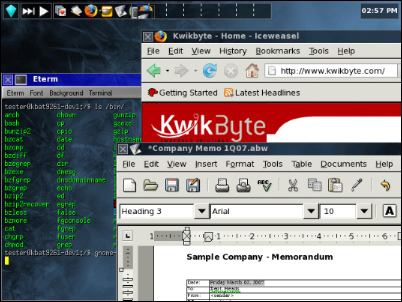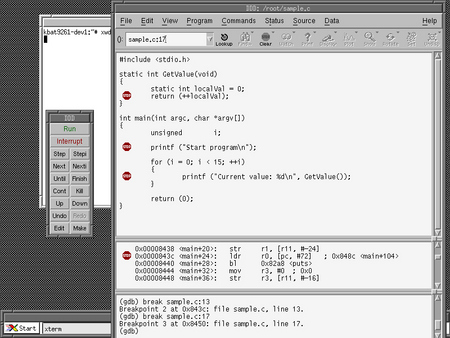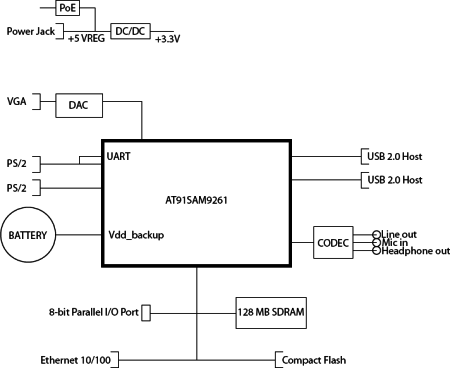Tiny, low-powered ARM SBC runs Linux
Mar 7, 2007 — by LinuxDevices Staff — from the LinuxDevices Archive — 8 views KwikByte is shipping a tiny, low-powered ARM-based SBC (single-board computer) aimed at applications such as kiosks and streaming audio clients. The KBAT9261 (“BAT6”) is based on an Atmel ARM9 processor, supports PoE (power-over-Ethernet), runs Linux and native development tools, and is available with an optional enclosure.
KwikByte is shipping a tiny, low-powered ARM-based SBC (single-board computer) aimed at applications such as kiosks and streaming audio clients. The KBAT9261 (“BAT6”) is based on an Atmel ARM9 processor, supports PoE (power-over-Ethernet), runs Linux and native development tools, and is available with an optional enclosure.
 Gnome Display Manager at VGA resolution (Click to enlarge) |
KwikByte suggests that eventually, ultra-low powered devices such as the BAT6 could replace power-hungry PCs in a variety of simple computing applications, including media kiosks, word processing stations, and email/browsing appliances. For now, however, the BAT6 targets developers, according to the company.
The BAT6 works best with light-weight environments, such as the venerable, infinitely configurable FVWM window manager, KwikByte says. However, with proper software tuning, a complete Gnome-based environment with browser, word processing, and streaming media client has run on the device (see screenshot at right). KwikByte has also shared screenshots of the device running the interesting FVWM-Crystal window manager, as shown below.

BAT6 FVWM-Crystal session
Currently, the BAT6 SBC (with optional case) is supplied with only native development tools, “removing the need for a cross-compiler host environment,” the company says. Developers wary of lengthy compile times on the board's 200MHz AT91SAM9261 processor might note that the processor recently gained support on TimeSys LinuxLink, an embedded developer subscription service that includes access to repositories of optimized, cross-compiled binaries.

KwikByte BAT6 debugging session under FVWM
(Click to enlarge)
The BAT6 is based on an Atmel AT91SAM9261, an ultra-low powered SoC (system-on-chip) more often used in battery-powered mobile devices than in wired computing devices. The SoC integrates a 200MHz ARM926EJ-S core that supports high-density 16-bit “Thumb” and DSP instructions, and includes Jazelle Java acceleration.
The AT91SAM9261 SoC also integrates USB2 (full speed) and an LCD interface controller, among other on-chip peripheral interfaces. KwikByte's BAT6 adds an audio subsystem, and a VGA display system based on unspecified components.

BAT6 architecture
Additional system details include:
- RoHS Compliant
- Independent 16KB instruction and 16KB data caches
- 128 MB SDRAM
- 8 MB boot/kernel Flash
- Compact Flash interface
- 10/100 Ethernet
- 2 x USB 2.0 full speed host ports
- VGA display port
- 2 x PS/2 for keyboard and mouse
- Audio (headphone out, mic in, line out)
- Integrated 802.3af (PoE) module (optional)
- On-chip Real-time clock (RTC) with battery back-up
- 5.1 x 4.7 x 1 inch case (optional)
Availability
The BAT6 is available to developers now, priced at $190, or $120 at volume, according to the company. The case is optional. Planned for later delivery is a full Linux development kit, presumably with cross-development tools.
This article was originally published on LinuxDevices.com and has been donated to the open source community by QuinStreet Inc. Please visit LinuxToday.com for up-to-date news and articles about Linux and open source.